How to Zest a Lemon The Right Way
Adding lemon zest is a great way to incorporate lemon flavor in both sweet and savory foods. But, just what is lemon zest and how do you zest a lemon? Let’s have a look!

What is Lemon Zest?
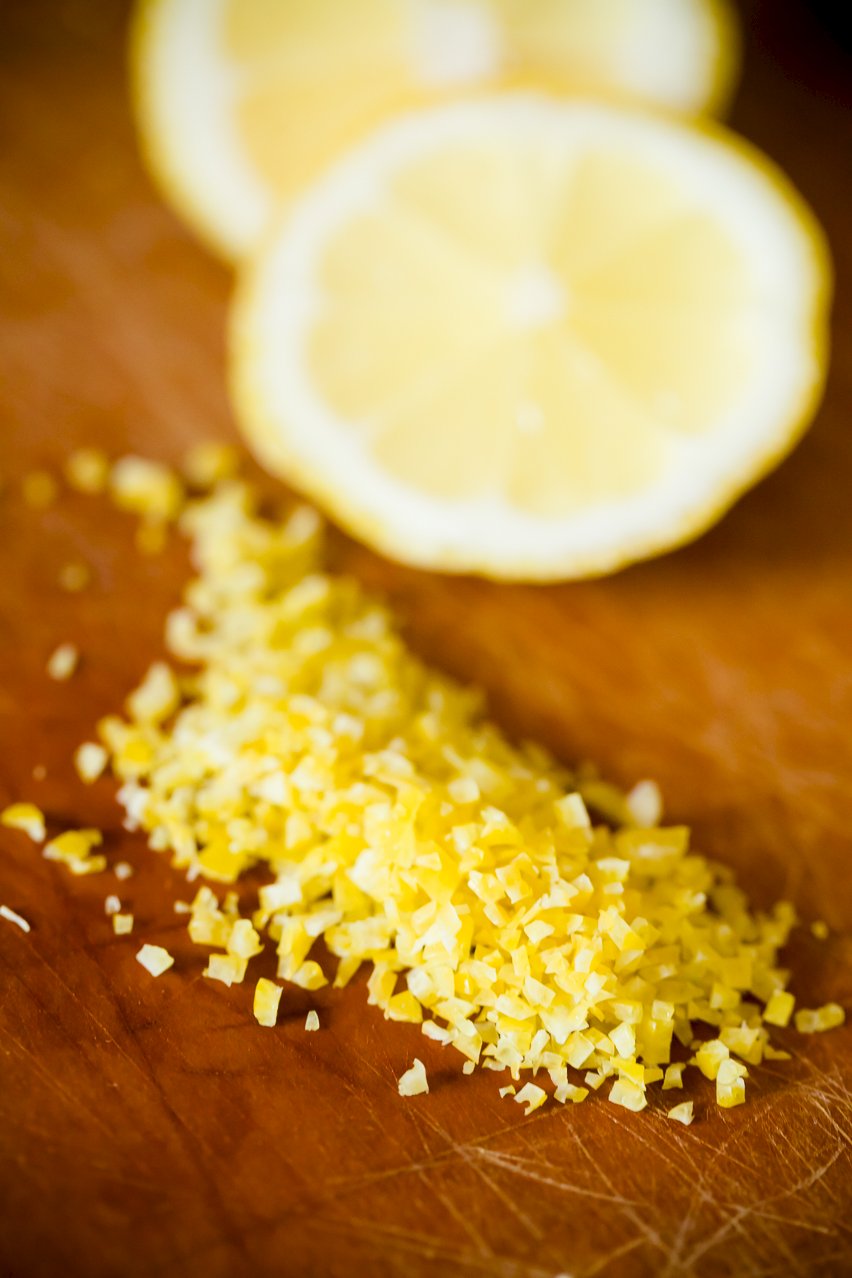
Lemon zest is the outermost rind of a lemon. The zest is the part of the lemon that is yellow.
Once you get to the white part, it’s called the pith. Pith has a bitter taste and you don’t want that to get into your food.
Lemon peel is not the same as lemon zest. If a recipe calls for lemon peel, it is usually looking for both the zest and the pith.
How to Zest a Lemon
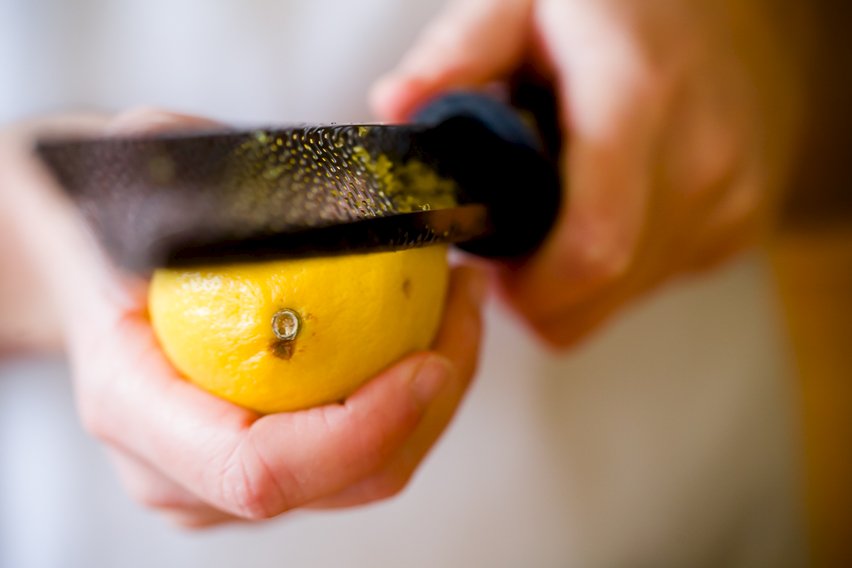
Zesting with a Microplane Grater
The easiest way to zest a lemon is with a microplane grater [paid link]. Slide the lemon back and forth along the steel shaft, shaving off tiny bits at a time.
The zest will collect in the microplane and you can measure it and add it to your recipes.
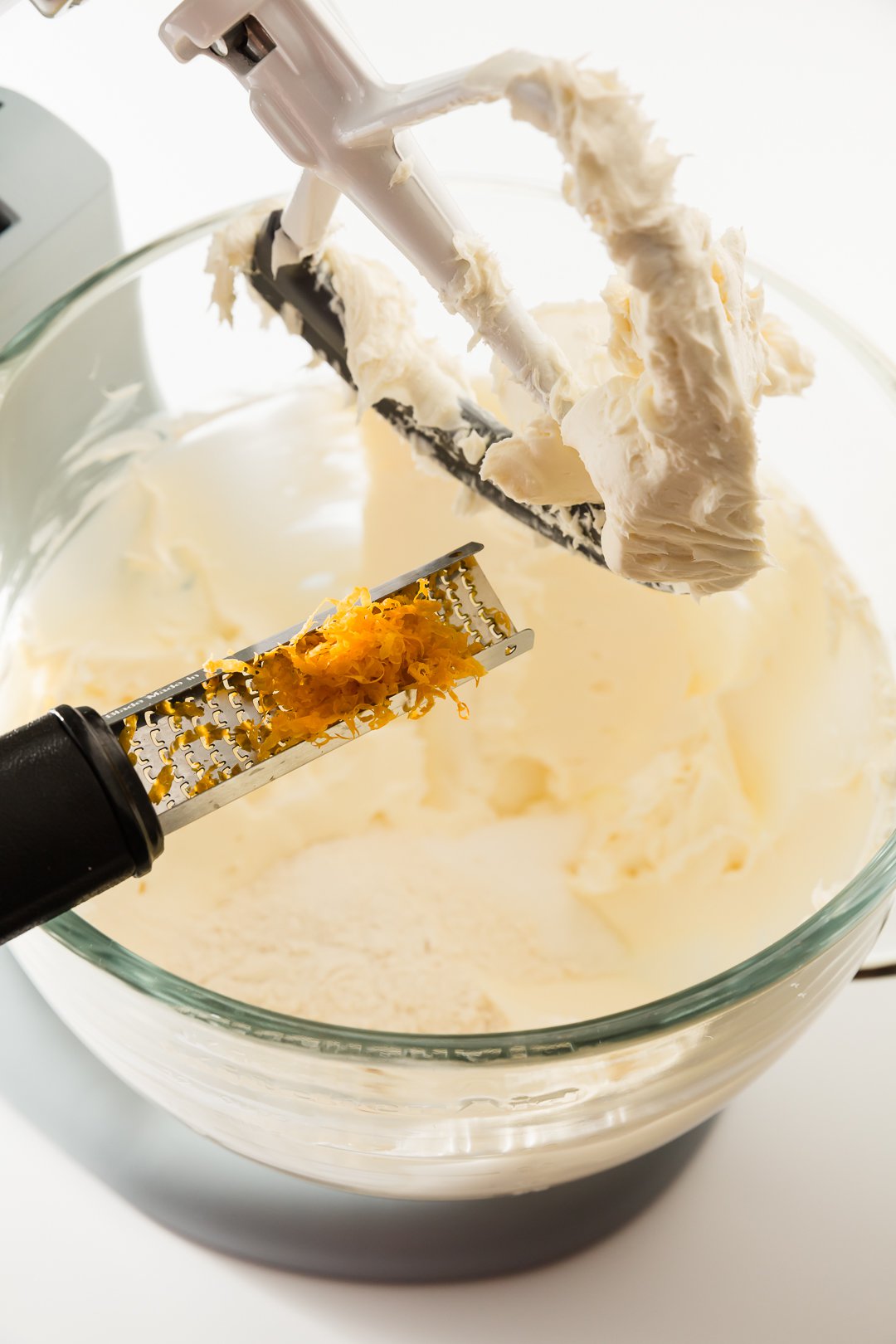
This image shows orange zest, but it’s the same process.
Zesting with a Knife
You do not need a grater (like a microplane) to zest a lemon. In fact, while zesting with a microplane is the easiest way to zest, if you want the strongest and most even lemon flavor in your food, zesting with a knife is the best way to do it. Here’s why:
- When you zest with a microplane, many of the lemon oils are released into the air – that flavor is not going into your dish. (This is why it smells so good when you zest with a microplane!)
- With a microplane, you are ripping the skin off of the fruit instead of slicing it. This means the cuts aren’t clean. The zest is more likely to stick together in clumps, and this yields an uneven distribution in your food.
In the image below, I made the top pile of zest with my microplane zester and the bottom pile with paring and chef’s knives. You can see how the top pile is more wet and sticky, while the bottom one has crisp cuts. I’d like to be able to cut the zest even finer, but even without super fine zest, the zest was superb in my lemon recipes. It was juicer and produced a stronger lemon flavor than zest from my microplane.

To zest with a knife: First, use a paring knife to slice both ends off of your lemon.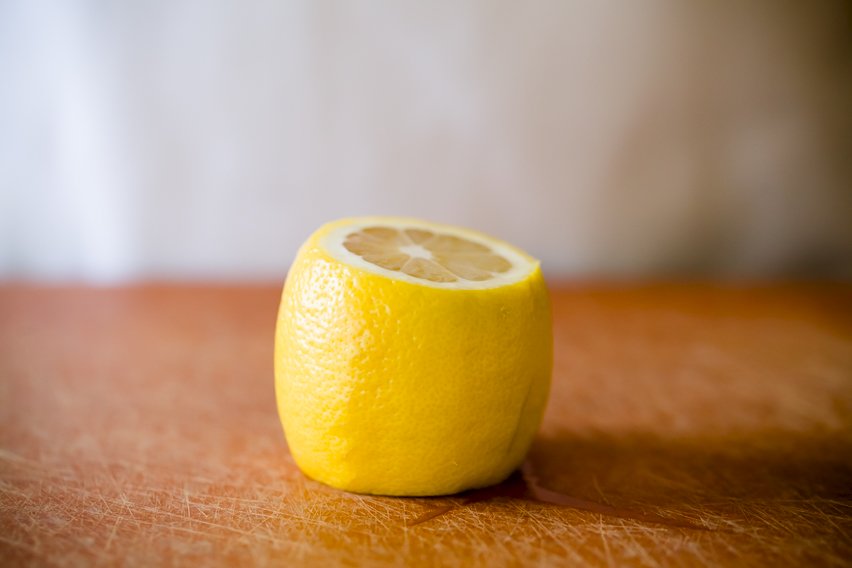
Next, use a paring knife to slice off the rind right where it meets the white pith.
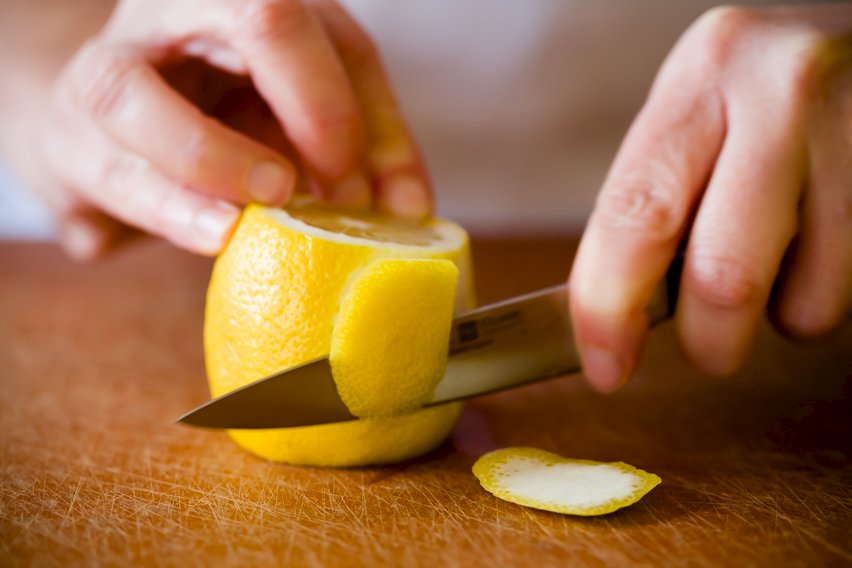
If you are new to knife skills like I am (or even if you are not), you may end up cutting off some of the pith as well. Use a horizontal cut to remove as much of the pith as you can.
Tip: Cut at the edge of your cutting board. Letting your elbow hang off the table makes a tremendous difference in achieving the correct knife angle for removing the pith.

Use your chef’s knife to julienne the pieces of rind. (Julienne means to cut into small strips.)
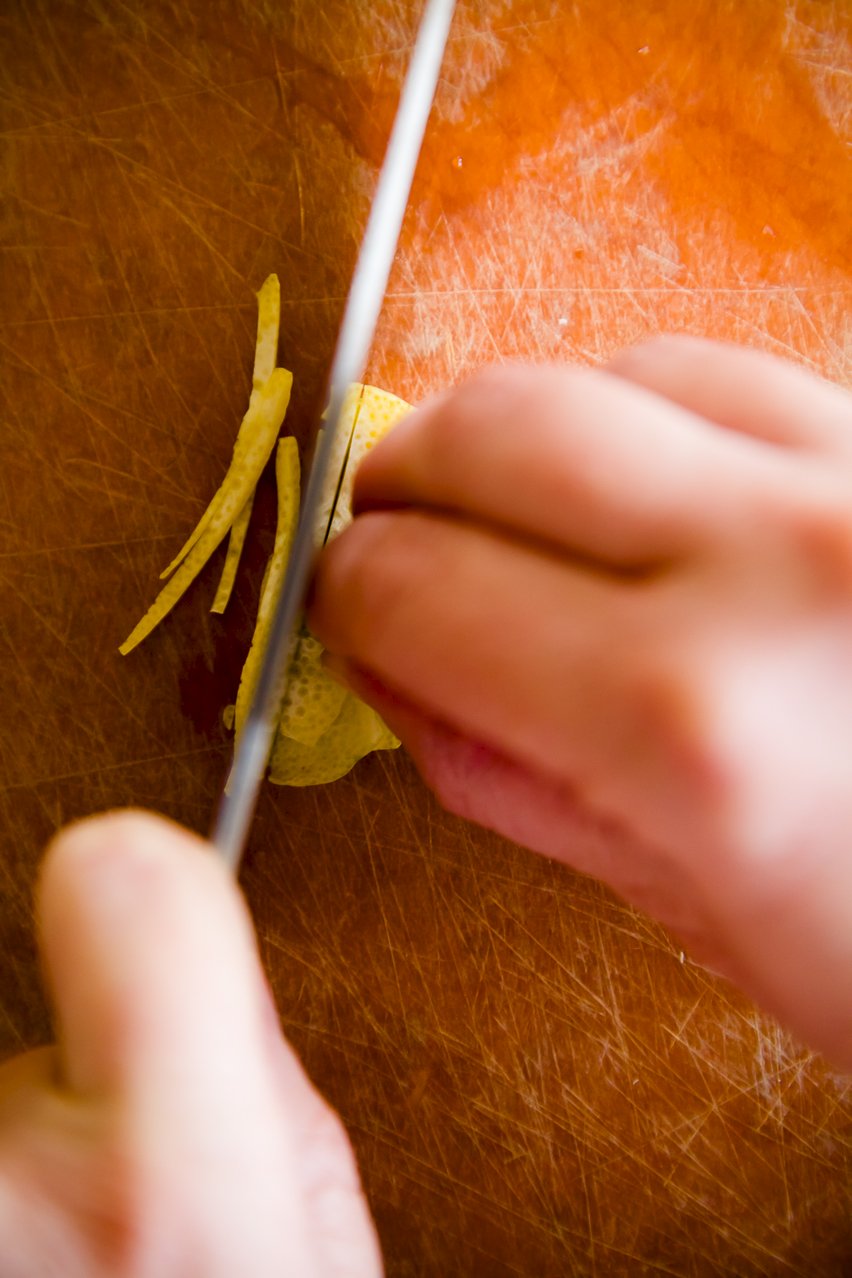
Then, finely dice the strips. If done right (don’t look at my cuts), the size and shape of the cubes should be consistent.

My pinky went a little rogue here. It should be tucked back. At least it was still far away from the blade.
How Much Zest Do You Get From One Lemon?
One lemon will yield about one tablespoon of lemon zest.
How to Store Lemon Zest
Freezing Lemon Zest
Lemon zest will stay fresh in the freezer for about six months. Freeze the zest on a parchment-lined cookie sheet. Once it is frozen, you can transfer it to a freezer-safe bag.
Use the frozen lemon zest as you would fresh lemon zest. You do not need to bring it to room temperature before using it.
Drying Lemon Zest
You can dehydrate lemon zest with a dehydrator or in the oven on the lowest setting for about six hours. The dehydrated zest can be stored at room temperature for about one year and used just as you would regular zest.
Tip: I also like to make powdered zest from citrus peels to have on hand when I need it. You can read more details about that process in my post on saving citrus rinds.
Can You Buy Lemon Zest?
In a pinch, you can buy lemon zest. Unfortunately, it’s not something that is typically sold at regular supermarkets in the United States. You will probably have to buy lemon zest online [paid link].
Lemon Zest Substitutes
In a pinch, you can substitute any citrus zest – like lime or orange – for lemon zest. It will change the flavor of your dish, but it will still taste great.
You can also use a small amount of lemon juice instead of the zest. Add just a little bit at a time to your recipe as the extra liquid will affect the end result of your dish.
Recipes Using Lemon Zest
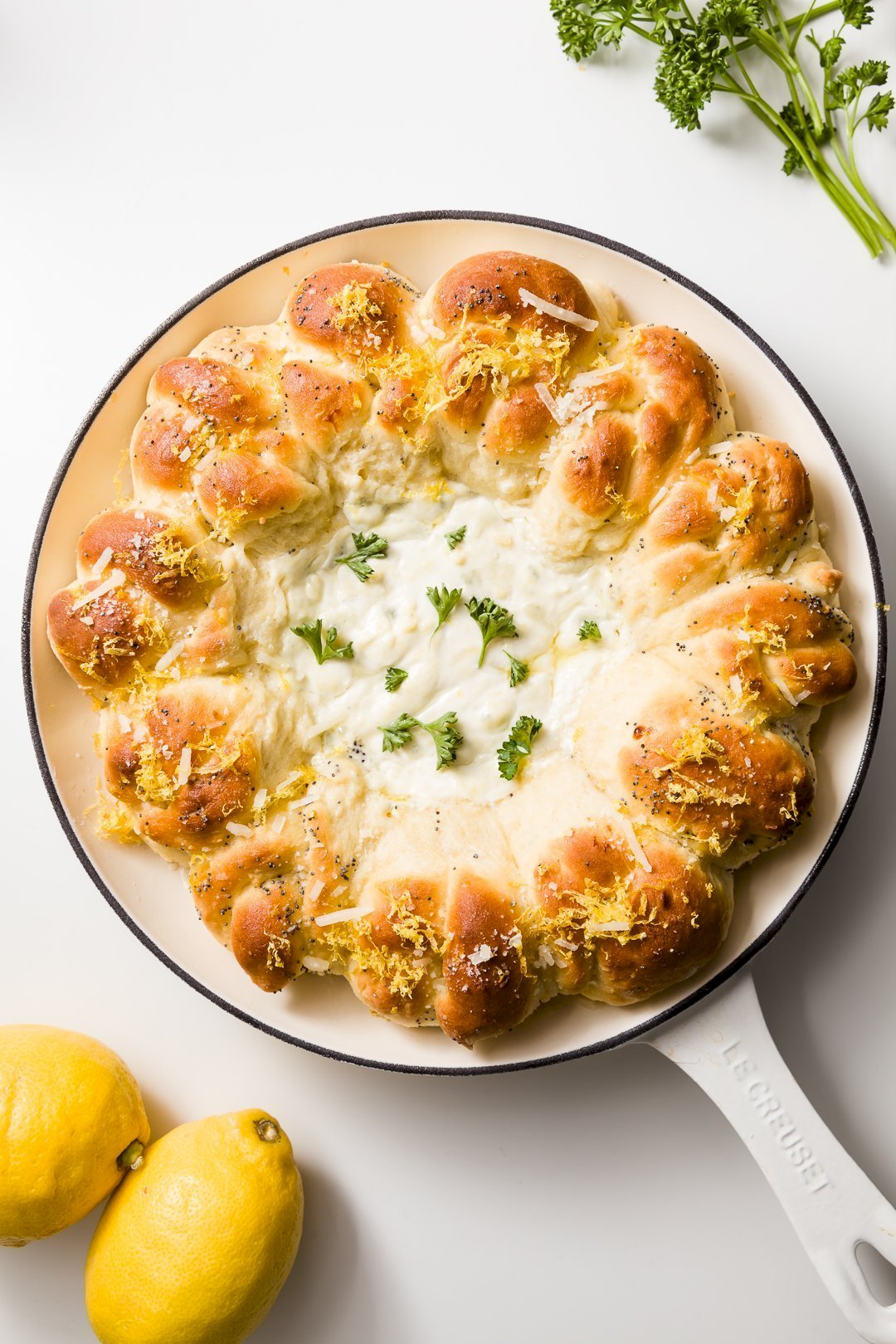
I love using lemon zest in my lemon cupcakes and lemon meringue cupcakes! It gives them such a great lemony flavor!
I also like a hint of lemon in cobblers and their cupcake counterparts like my cherry cobbler cupcakes.
Try this lemon bundt cake from Sprinkle Some Sugar.
Lemon zest is also wonderful on or in rolls, like in my wreath bread shown above.
Of course, it’s a must in lemon bars like the ones from Also the Crumbs Please.
If you are going savory, lemon zest is great on fish or chicken.
How to Zest a Lemon
Equipment
- Paring knife
- Chef's knife
Ingredients
- 1 lemon washed
Instructions
- Use a chef's knife to julienne the pieces of rind. (Julienne means to cut into small strips.)
- Finely dice the strips. The size and shape of the cubes should be consistent.
Notes
- When you zest with a microplane, many of the lemon oils are released into the air - that flavor is not going into your dish.
- With a microplane, you are ripping the skin off of the fruit instead of slicing it. This means the cuts aren't clean. The zest is more likely to stick together in clumps, and this yields an uneven distribution in your food.
Loading comments...